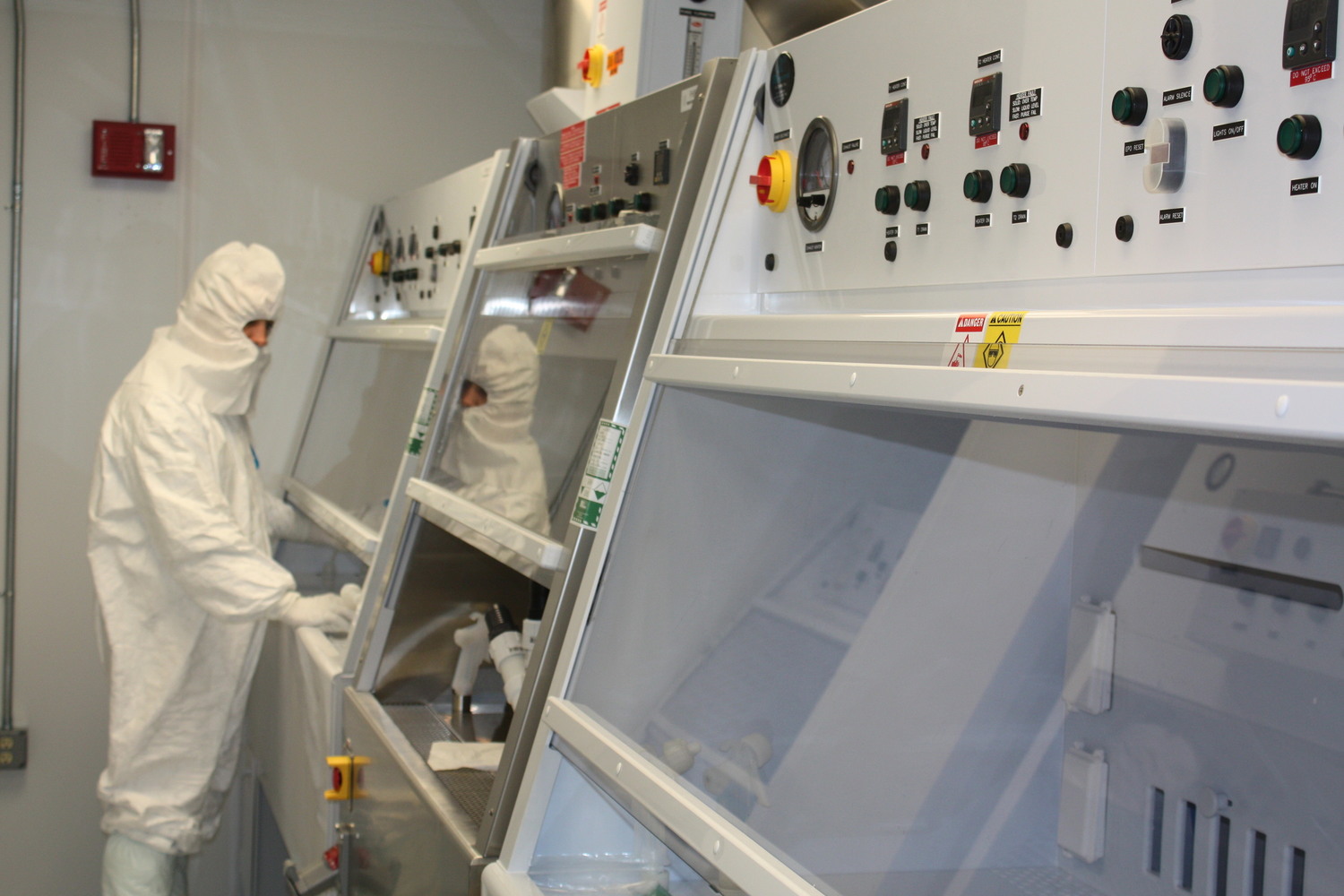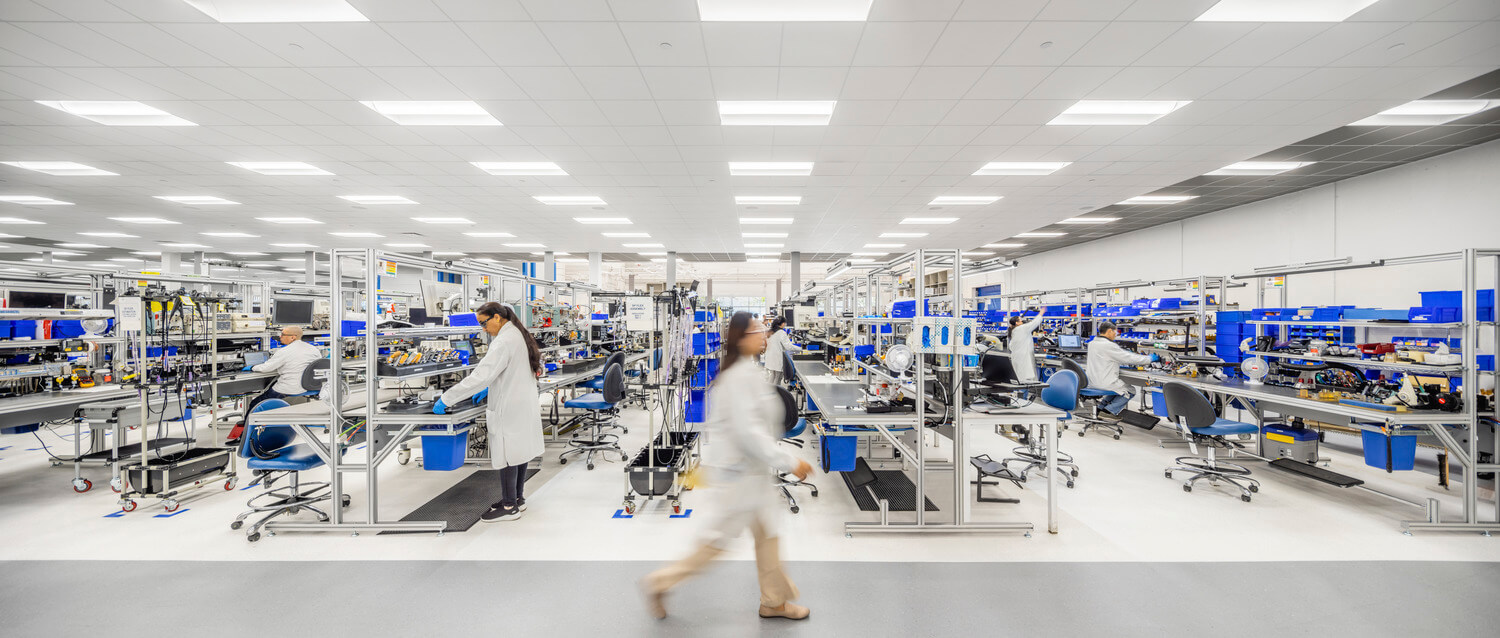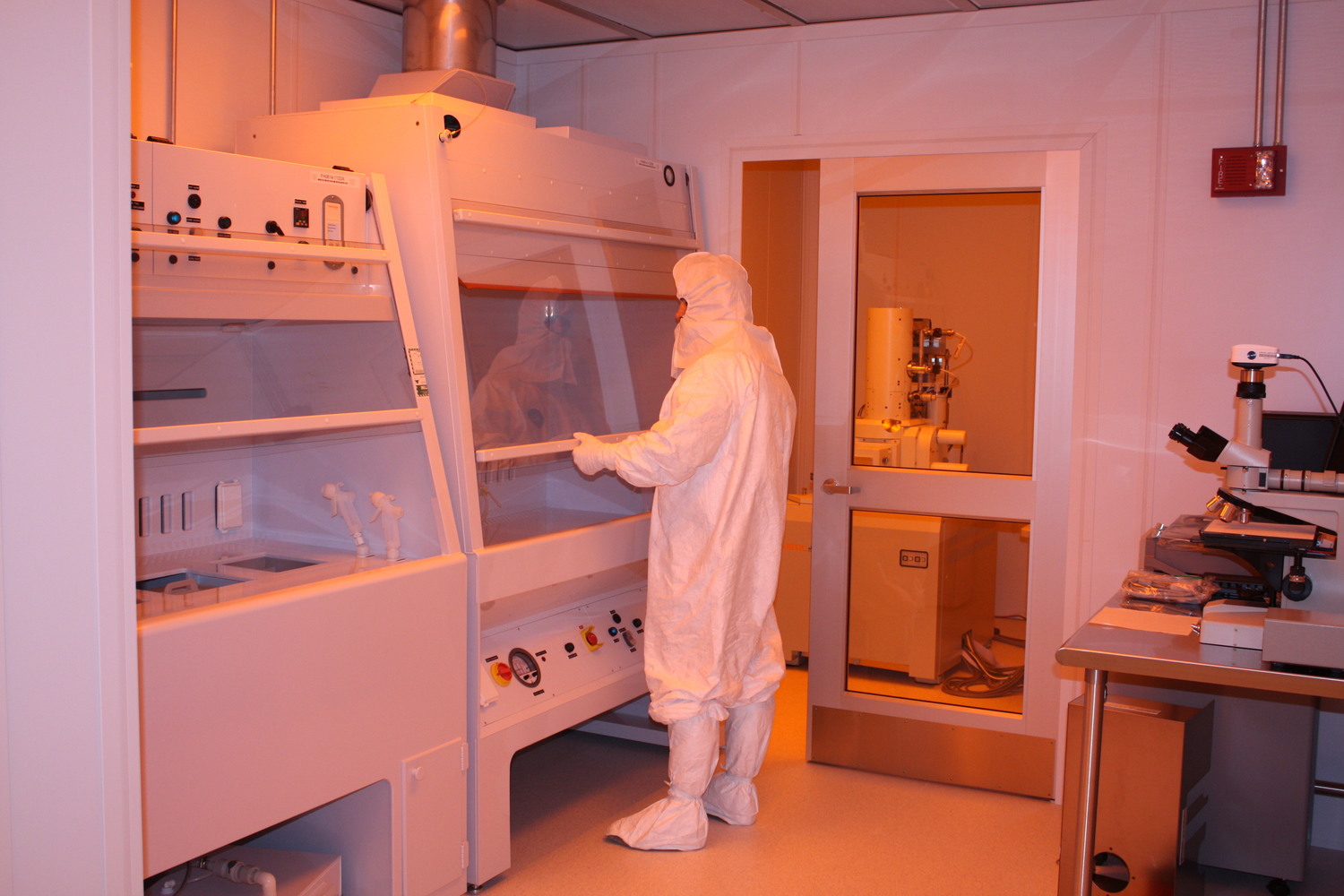
The design replaces the warehouse shelving, cleaning supplies, and attic stock with clean bays for metallization, deposition and etch, lithography, wet chemistry, and metrology. The existing janitorial closet was repurposed for gas storage.
Process cooling water was fed from a hex across the hall in a vacant corner of the shipping/receiving dock. The design relocates the acid-neutralization system, and pulled the air handler out of the space entirely, hanging it above the ceiling in the adjacent lobby space. By locating the majority of the services outside of the clean space, the design maximizes white space within the available square footage.
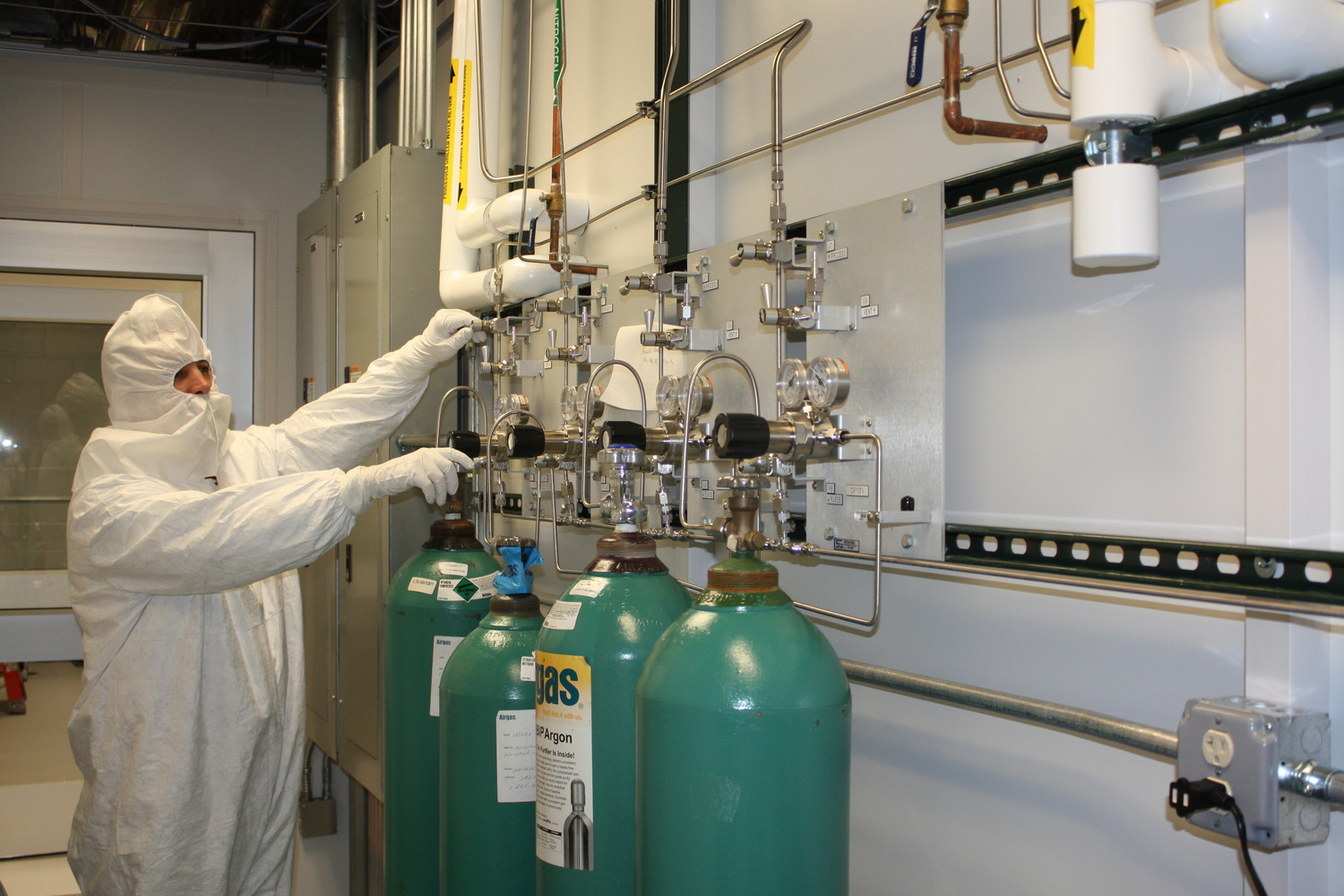
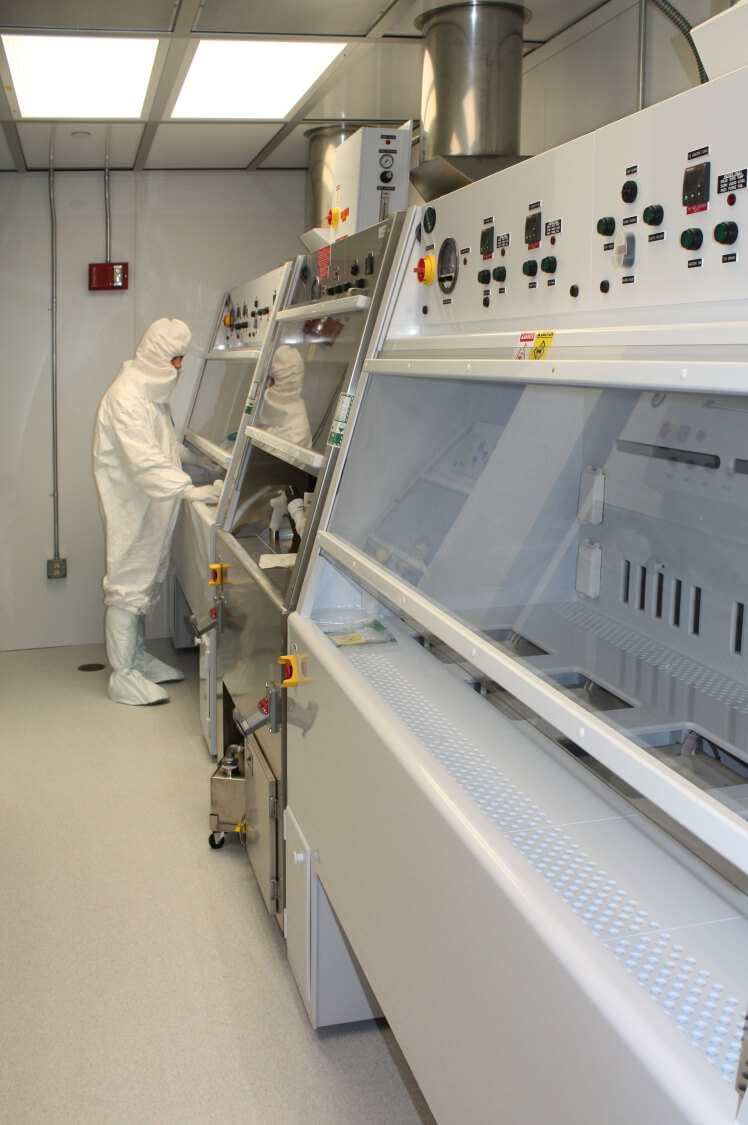
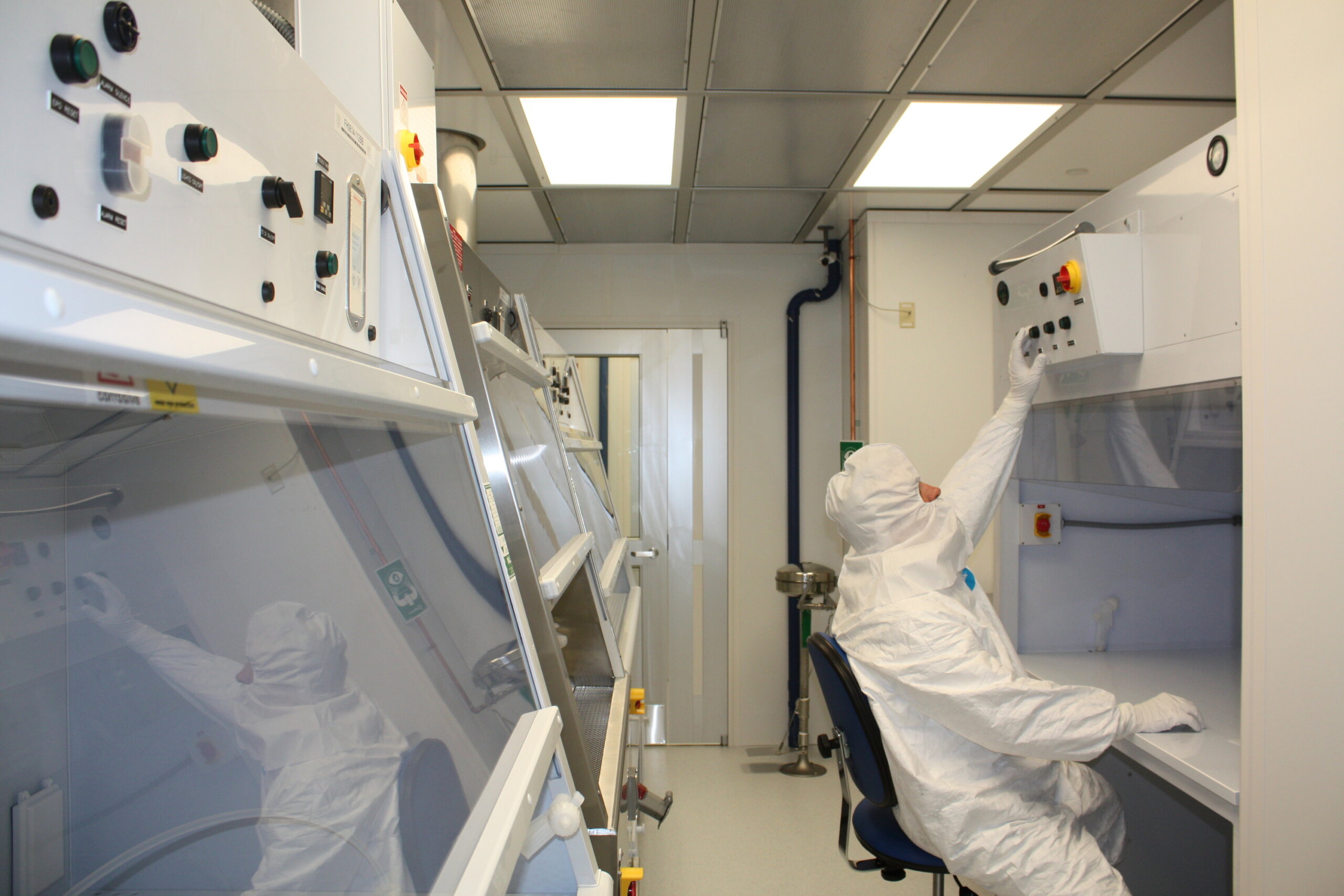
The cleanroom’s location is central to the many departments that collaborate nearby. Cross-discipline research is a keystone of the program, which involves the university’s physics, chemistry, biology, and chemical engineering departments.
UMass’s new nanotechnology facility has enabled new possibilities in student and faculty research in polymer synthesis, characterization, morphology, rheology, physics, engineering, biotechnology, and green technology. Research includes the development of band-aid-sized, patch-type sensors capable of gauging stress and fatigue through a chemical analysis of the wearer’s sweat.
